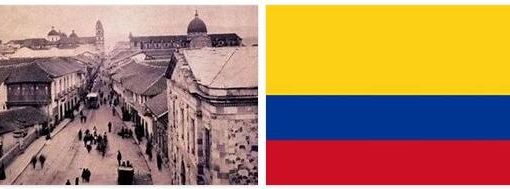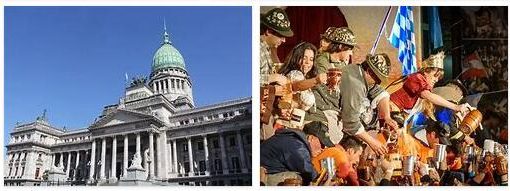In Bolivia, an independent country since 1825, the first screenings took place in 1897 in La Paz, but the first permanent theaters were created only in 1915. A limited documentary production took place starting from 1904 and the main director of this period, active from 1912, was Luis G. Castillo. In 1925 the first feature film was made, Corazón aymará by Pedro Sambarino, followed by La profecía del lago (1925) by José María Velasco Maidana (never screened), La gloria de la raza (1926) by Castillo and archaeologist Arturo Posnansky, and Maidana’s Wara Wara (1930), the most important silent film: all based on Indian themes. In 1933 the first attempt was made to synchronize in the hall with Hacia the glory of Mario Camacho and José Jiménez, but we can speak of the first sound film only with the medium-length documentary La guerra del Chaco (1936) by Luis Bazoberry. However, given the high costs of the new system, documentary remained the only genre practiced for over twenty years after the advent of sound. In 1947 Augusto Roca and Jorge Ruiz (flanked by the American Kenneth Bolivia Wasson) founded the first production company, Bolivia Films. The two, in the following years, were also authors of important documentary works (Virgen india, 1948; Donde nació un imperio, 1949, the first Bolivian film in color; Bolivia busca la verdad, 1950; the last two with Alberto Perrín Pando). reforms launched by the new government of the Movimiento Nacionalista Revolucionario (MNR), in power after the popular uprising of 1952, also affected the film industry: in 1953 the Bolivian Cinematographic Institute (ICB) was created, which in fifteen years financed over 150 works. Ruiz was thus able to shoot, among others, the documentary short films Vuelve Sebastiana (1953), together with Roca, and Los que nunca fueron (1954, on the subject of the writer Oscar Soria, later the main screenwriter of the country), and the medium-length film La vertiente (1958, first feature film since 1933), evidence of a perfect union between political commitment and aesthetic quality. In 1958 the documentary filmmaker Jorge Sanjinés, the main figure of Bolivian cinema, began, who in 1960 founded the Kollasuyo group with Soria and producer Ricardo Randa, engaged in the struggle for freedom of expression. In 1964 a coup d’etat brought a military junta to power, who initially pursued the policy of the MNR in the field of cinema and appointed Sanjinés as president of the ICB. But when in 1966 the director made a revolutionary film with funds from the institute, Ukamau (That’s it), the first feature film with a Bolivian subject, he was dismissed from his post; in 1968 the ICB was closed. In 1967 the Kollasuyo group was transformed into the independent production house Ukamau Limitado (which the director of photography and later director Antonio Eguino joined in 1968); it financed the two most important films in the history of Bolivian cinema, both by Sanjinés, in which all the members of the group took part in various capacities, Yawar Mallku (1969; Sangue di condor) and El coraje del pueblo (1971), the latter shot in the atmosphere of enthusiasm due to the rise to power in 1970 of the left-wing military. But the right-wing coup of 1971 pushed some filmmakers into exile, including Sanjinés, who continued to make films in Peru and then Ecuador. Others chose to stay at home: Eguino made Pueblo chico (1974) and Chuquiago (1977), Ruiz El clamor del silencio (1979). In the meantime, a new generation of directors made their debut, both in Bolivia (Jorge Guerra Villalba, Paolo Agazzi) and abroad (Alfonso Gumúcio Dagrón, José and Hugo Cuellar Urizar), while in 1976 the Cinemateca Boliviana was founded, which would play in the decades after an important role of dissemination and organization. The elections of 1978 marked the start of a process of democratic renewal, culminating in the return to civilian government in 1982: many authors from the world of cinema returned to their homeland (including Sanjinés and his brothers Cuellar Urigar), and laboriously began to lay the foundations for new productions. Among the few films that came to fruition are Eguino’s Amargo mar (1984), Las banderas del amanecer (1984) and La nación clandestina (1989) by Sanjinés, Los hermanos Cartagena (1985) by Agazzi. To this already critical picture was added the expansion of the television medium, a phenomenon that contributed to the closure of many cinemas. For Bolivia 2015, please check dentistrymyth.com.
Finally, in 1991, the launch of a law on cinema made it possible to sanction state funding, the introduction of audiovisual materials in schools, the safeguarding of the specific national heritage, the organization and regulation of the cinema market. In 1992, the Consejo Nacional del Cine (CONACINE), a mixed state and private body, came into operation, which finances production through the Fondo de Fomento Cinematográfico (FFC). The fruits of the new orientation were seen in the space of a few years. Many established authors have returned to directing: Sanjinés has made Para recibir el canto de los pájaros (1995), and Agazzi El día que murío el silencio (1998). New directors were able to debut: Marcos Loayza with Cuestión de fe (1995), Mela Márquez with Sayariy (1995), Hugo Ara with La oscuridad radiante (1996), Mauricio Calderón with El triángulo del lago (2000). The nineties also marked the expansion of new technologies, and in particular the use of video favored the formation of spontaneous groups, which became real points of reference: the Wallparrimachi, the Lu-Pan-Gua, and others who they refer to authors such as Alfredo Ovando, Raquel Romero, Néstor Agramont.




